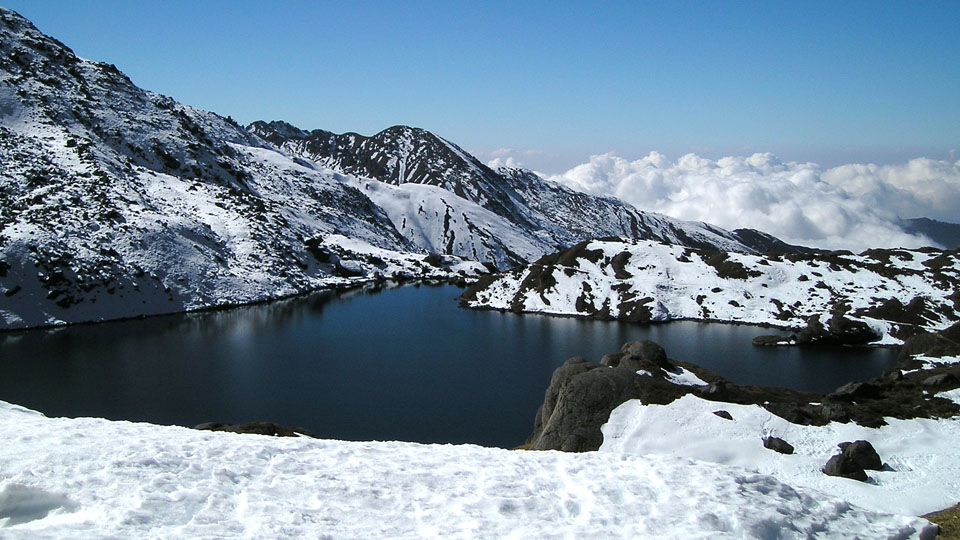Gosaikunda Lake trek also known as frozen lake trekking visits the natural lake in the lap of Himalayas which has high religious importance.
Gosainkunda or Gosainkunda Lake is one of the most renowned religious places and pilgrimage spot of Nepal. The lake is surrounded by high mountains on the north and rolling green hills in the south, the Lake is grand and picturesque. There are other nine renowned lakes such as Saraswati, Bhairav, Surya and Ganesh Kunda and more to sightseeing. Walk leads with overnight at Sing Gompa and past Laurabina to reach this remarkable holy spot at Gosainkunda, after ample time to enjoy this gorgeous sacred place head back to Dhunche for thrilling drive to Kathmandu, with extraordinary moment on Gosaikunda Frozen lake Trekking.
Highlight of Gosaikunda Frozen Lake Trek
- Yolmo culture of high mountain villages
- Laurabinayak at 4610m
- The holy lake Gosainkunda
- Rhododendron forests, various Shrubs, and exotic Orchids
- The view that stretches from Mt. Dhaulagiri to Mt. Everest (highest peak of the world)




